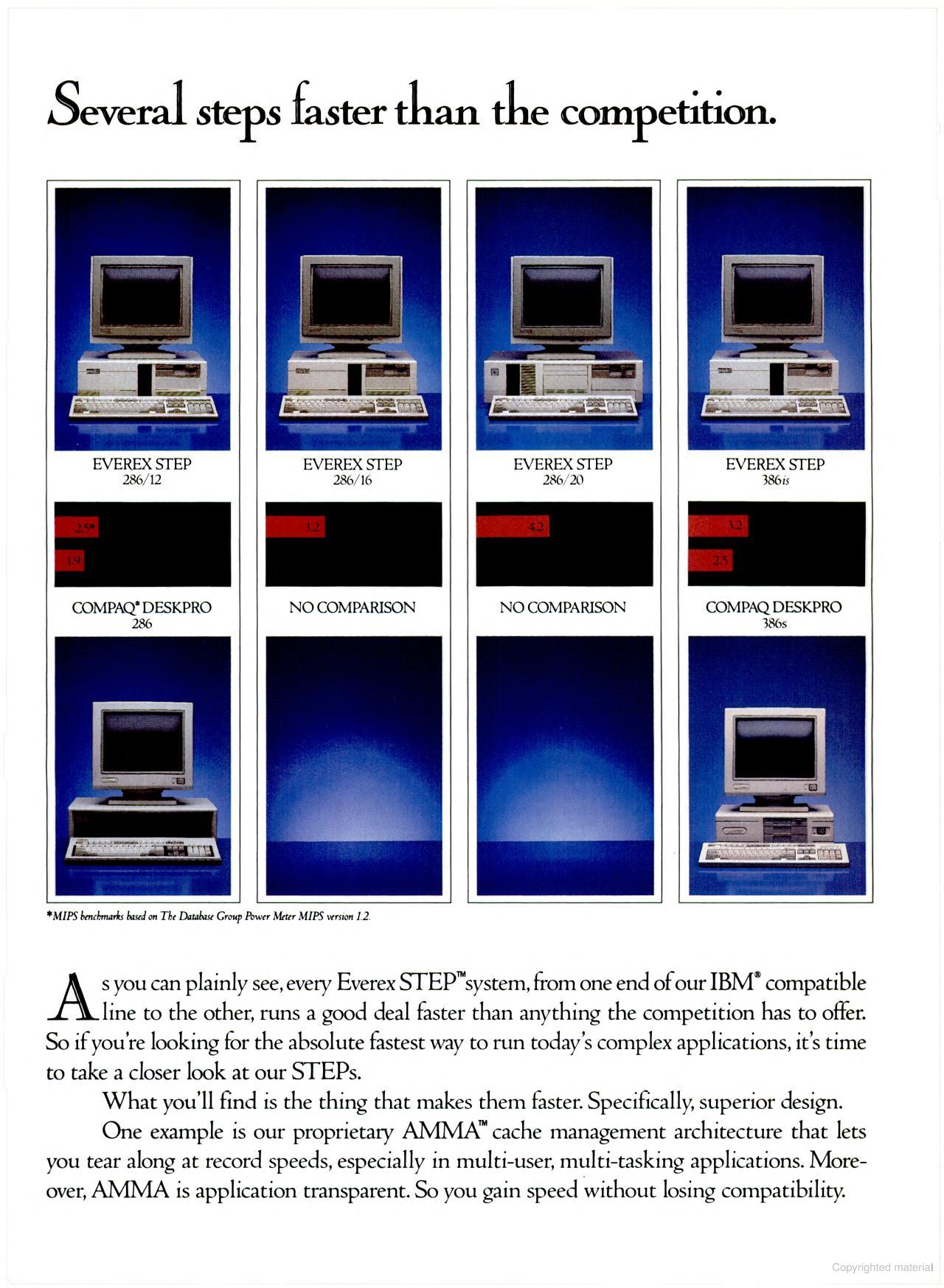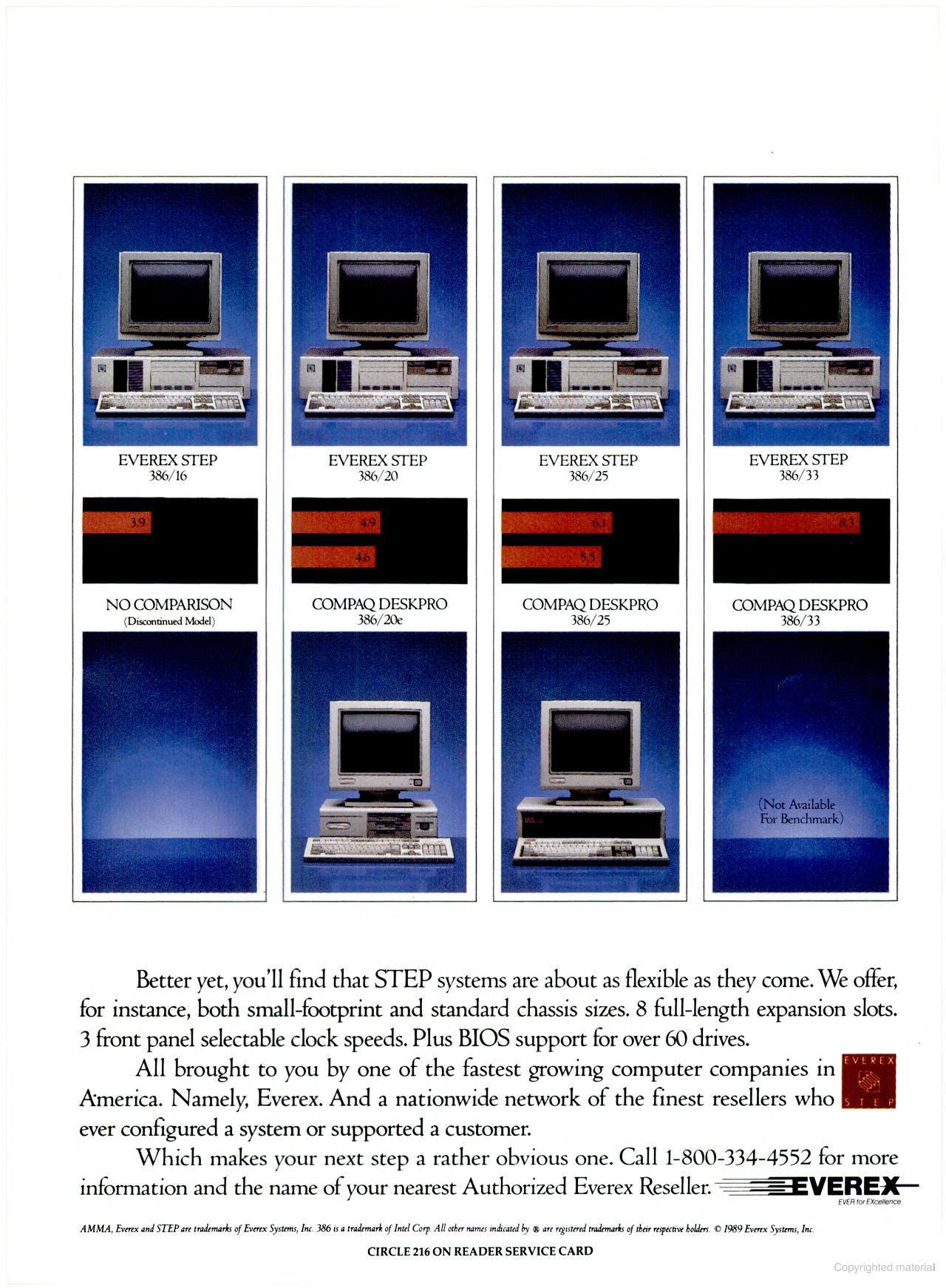Everex ("Ever for Excellence!") was founded in 1983, in Fremont, CA. In their early years they produced hard disks, tape backup drives, memory expansion cards, graphics products and modems. Later on, they focussed on manufacturing and selling desktop and notebook computers to the consumer market.
They filed for bankruptcy in January 1993 and the company was purchased by Formosa Plastics Group, hence becoming part of a multinational conglomerate alongside companies like First International Computer (FIC), the world's leading motherboard manufacturer
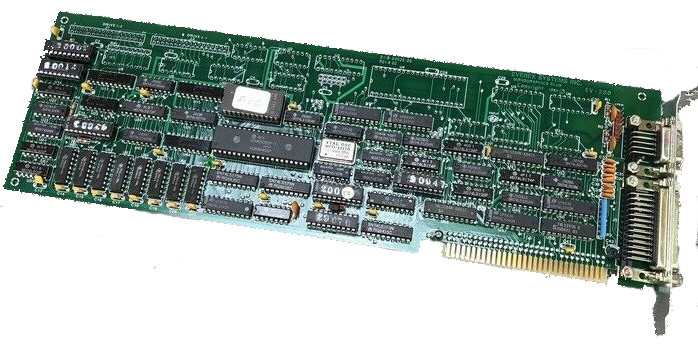 EV-200 Monographics Plus EV-200 Monographics Plus
Launched: 1983
Bus: ISA 8-bit
Support: MDA
Part #: ?
Ports: 9-pin DSUB (digital video output), 25-pin DSUB (parallel port)
Price: ?
Came with the added bonus of a parallel port (as many MDA cards did at the time).
More Images
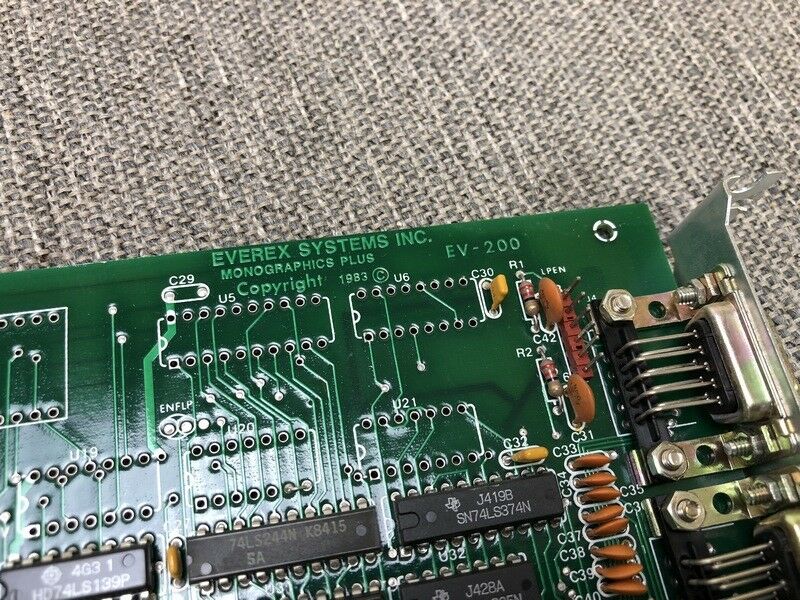 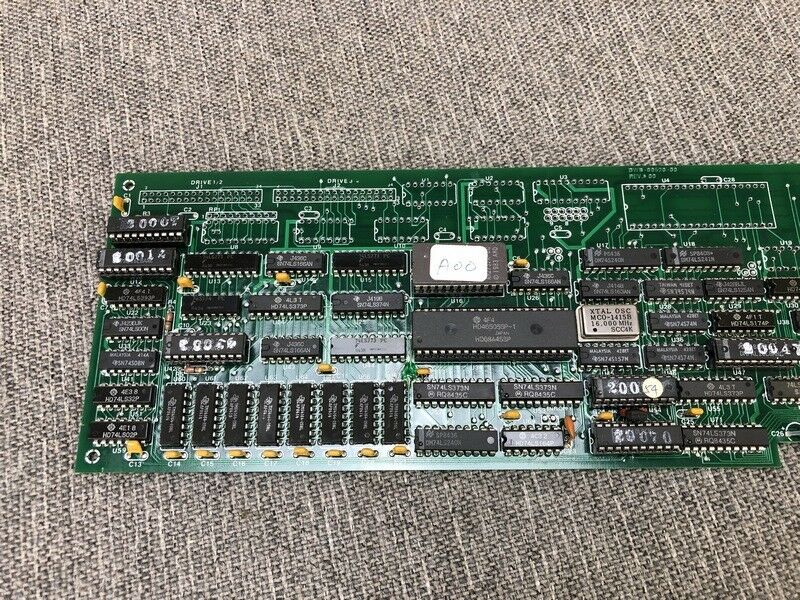 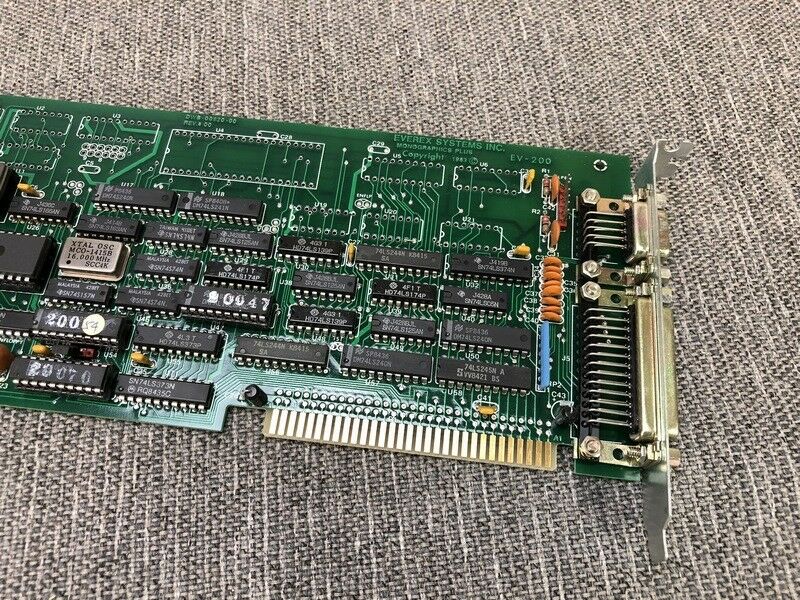 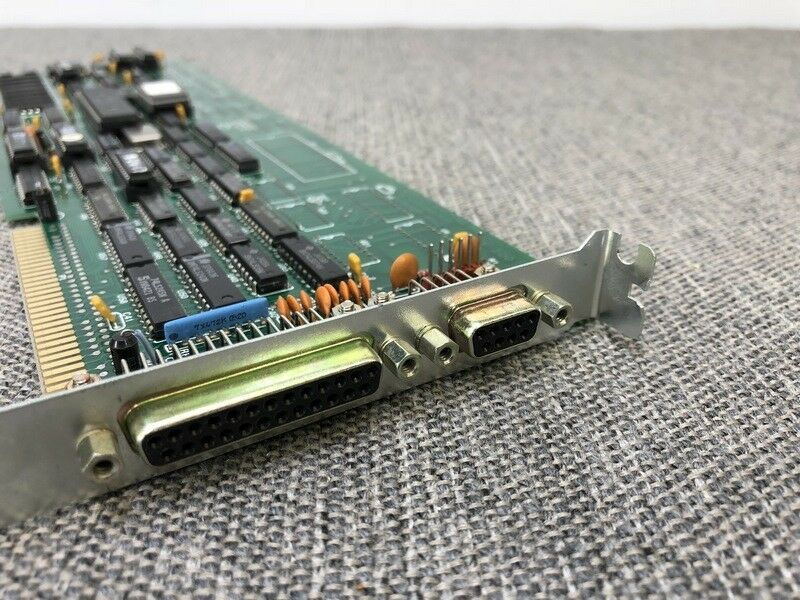
|
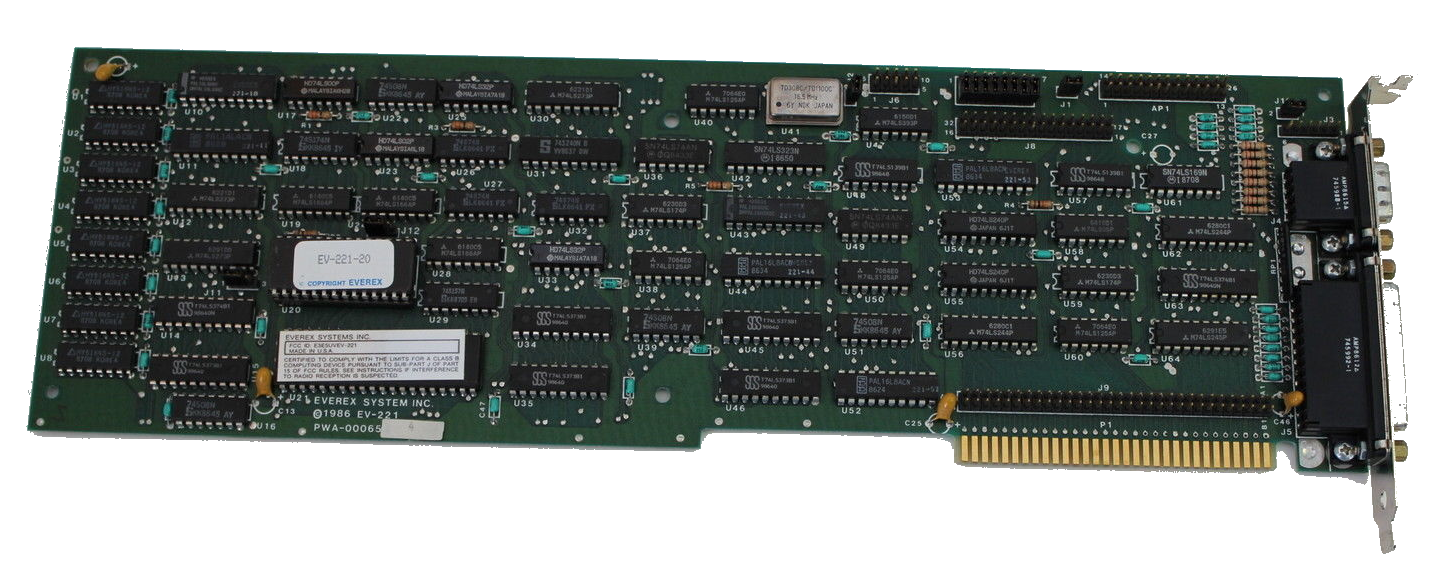 EV-221 Evergraphics EV-221 Evergraphics
Launched: 1983
Bus: ISA 8-bit
Support: MDA
Part #: PWA-00065
Ports: 9-pin DSUB (digital video output), 25-pin DSUB (parallel port)
Price: $139 (Feb '87)
Came with the added bonus of a parallel port (as many MDA cards did at the time). |
 EV-640 Edge / The Everex Edge EV-640 Edge / The Everex Edge
Launched: 1984?
Bus: ISA 8-bit
Support: CGA, Hercules
Part #: EVO-00640-00
Price: ?
Displays 320 x 200 in 16 colours and 720 x 348 graphics modes.
132-column text mode.
Parallel port and lightpen connectors.
|
 Edge II Edge II
Launched: 1985?
Bus: ISA 8-bit
Support: CGA
Part #: Unknown
Price: ?
|
 EV-222? Evergraphics Plus EV-222? Evergraphics Plus
Launched: 1985
Bus: ISA 8-bit.
Support: Hercules
Part #:
Ports: 9-pin DSUB (digital video output)
Price: £95 in 1987
|
 EV-231A Evergraphics Plus EV-231A Evergraphics Plus
Launched: ?
Bus: ISA 8-bit
Support: MDA
Part #: Unknown
Price: ?
|
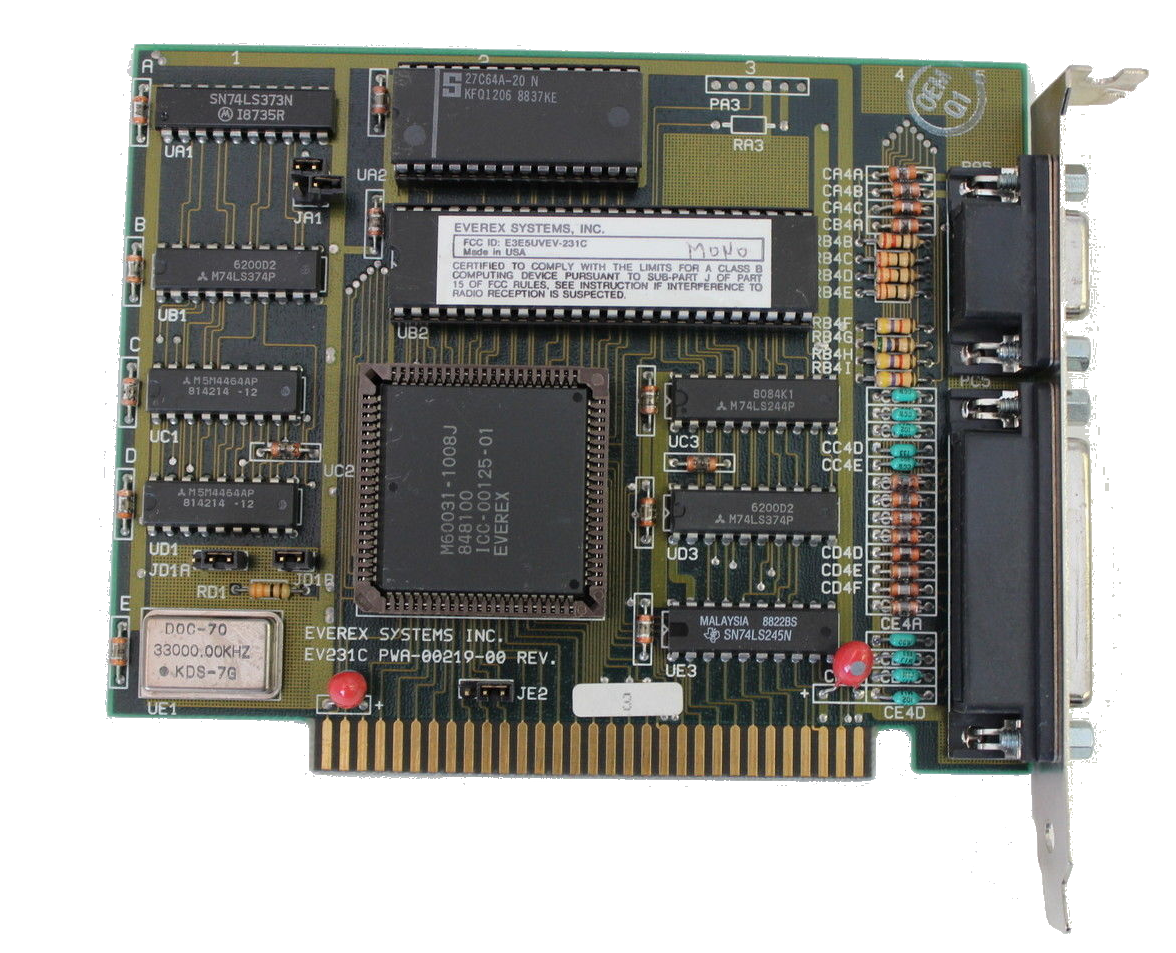 EV-231C Evergraphics Plus EV-231C Evergraphics Plus
Launched: ?
Bus: ISA 8-bit
Support: MDA
Part #: PWA-00219
Ports: 9-pin DSUB (digital video out) and 25-pin parallel port.
Price: ?
|
 EV-231D Evergraphics Plus EV-231D Evergraphics Plus
Launched: ?
Bus: ISA 8-bit
Support: MDA
Part #:
Price: ?
|
 EV-480 / EGA 480 EV-480 / EGA 480
Launched: ?
Bus: ISA 8-bit
Support: EGA
Part #:
Price: $69 (Feb '92)
|
 EV-233 Evergraphics Deluxe EV-233 Evergraphics Deluxe
Launched: ?
Bus: ISA 8-bit
Support: Hercules
Memory: 256 KB
Part #:
Price: ?
A Hercules-compatible graphics card offering resolutions up to 1024 x 704, while also supporting 1024 x 352 and 720 x 348. In text mode, the card is able to support the HGC Plus "RAM fonts", both 48 KB and 4KB modes.
Advert
|
 EV-653 Micro Enhancer EV-653 Micro Enhancer
Launched: ?
Bus: ISA 8-bit
Support: MDA, EGA
Part #: Unknown
Price: $219 (Mar '87), $95 (Jun '90), $59 (Apr '91)
|
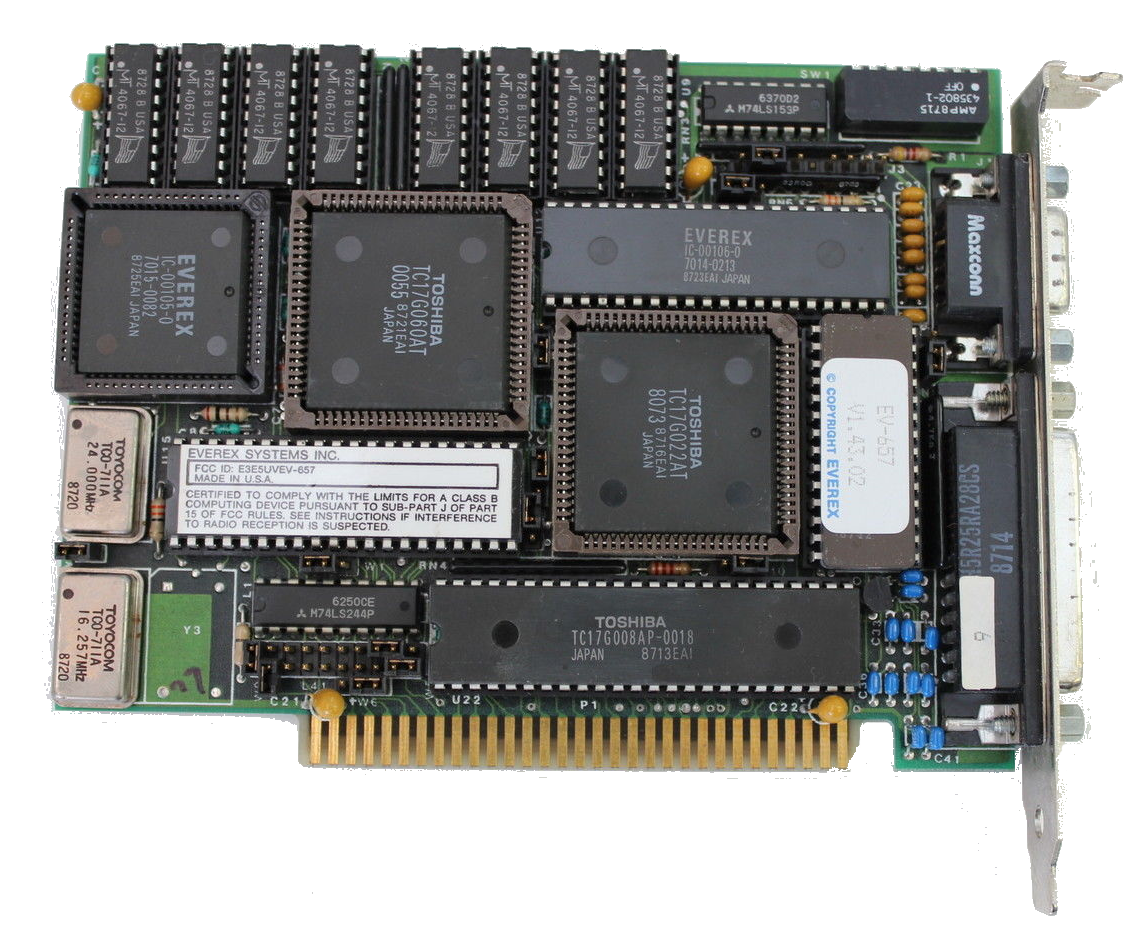 EV-657 EV-657
Launched: ?
Bus: ISA 8-bit
Support: MDA, CGA, EGA
Part #: PWA-00133-0
Ports: 9-pin DSUB (digital video out) and 25-pin parallel port
Price: $149 (Jan '88)
|
 EV-657B Micro Enhancer EV-657B Micro Enhancer
Launched: ?
Bus: ISA 8-bit.
Support: EGA.
Part #: Unknown
Ports: 9-pin DSUB (digital video out) and 25-pin parallel port.
Price: ? |
 EV-657 Micro Enhancer Deluxe EV-657 Micro Enhancer Deluxe
Launched: ?
Bus: ISA 8-bit
Support: EGA
Part #: Unknown
Price: $149 (Jan '88)
|
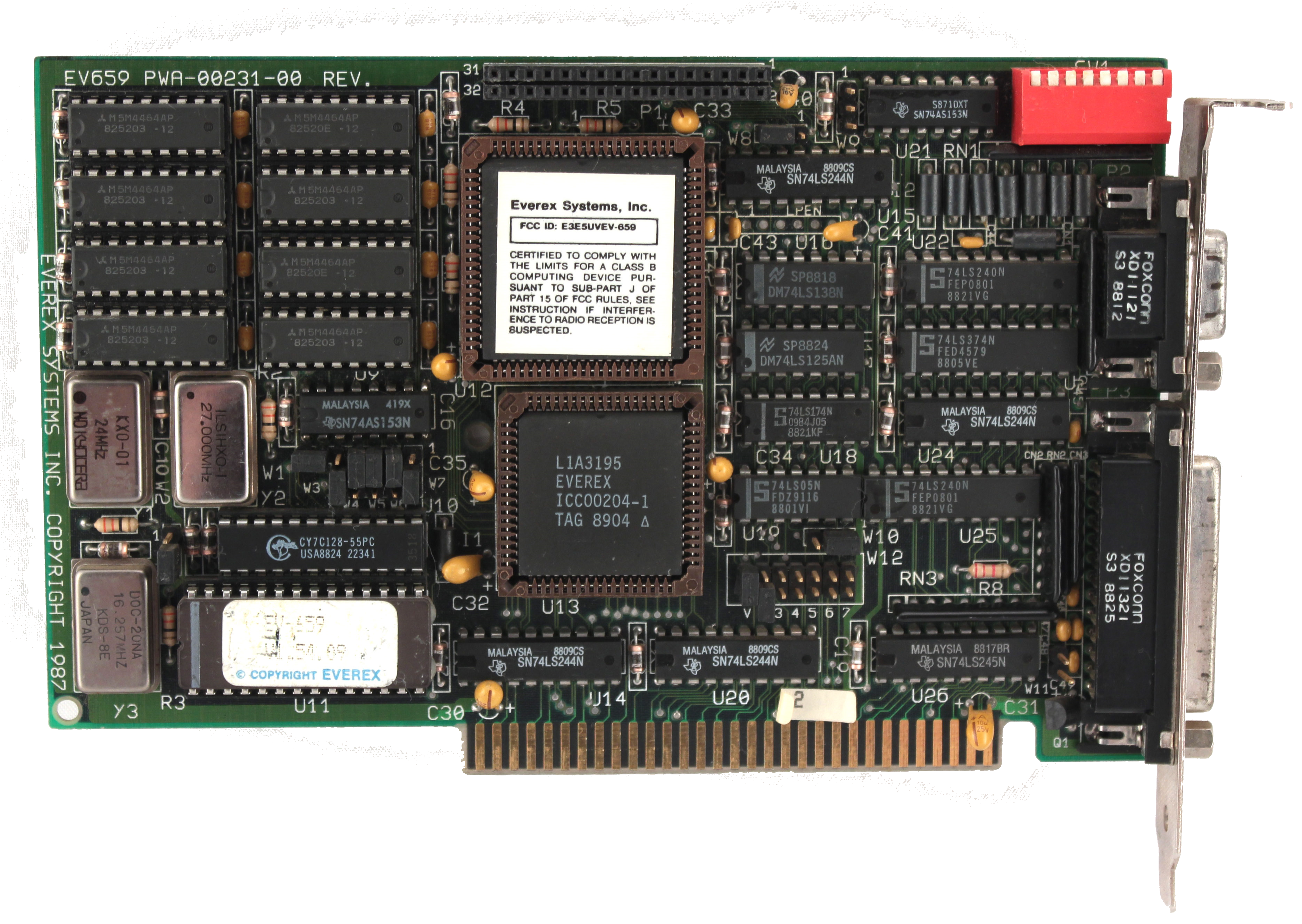 EV-659 Micro Enhancer Deluxe EV-659 Micro Enhancer Deluxe
Launched: 1987
Bus: ISA 8-bit
Support: MDA, CGA, EGA
Memory: 256 KB
DRAM
Ports: 9-pin DSUB (digital video output)
and parallel port.
Part #: Unknown
Price: $99 (Sep '90)
Codenamed "ICC00203" (named after the main chip), this card not only provides 100% IBM EGA compatibility, but also extended EGA graphics modes including 720 x 410 and 640 x 480, plus 132-column text modes. The card also has auto-switch capabilities so if you run a Hercules or CGA-only application, the card will automatically switch to that resolution and colour depth without having to set jumpers or DIP switches.
Click here to see an advert.
|
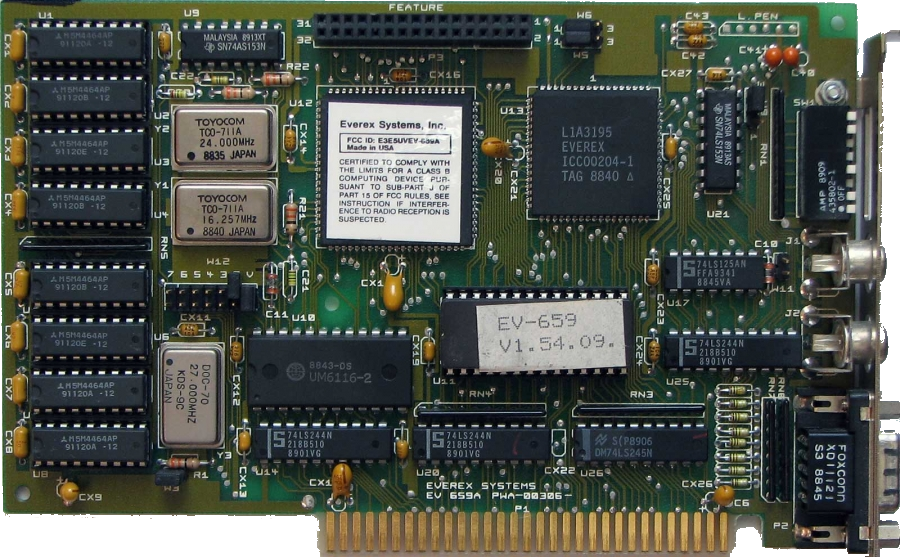 EV-659A Micro Enhancer EV-659A Micro Enhancer
Launched: 1987
Bus: ISA 8-bit
Support: MDA, CGA, EGA
Part #: Unknown
Price: ?
A "Super EGA" card with AutoMode (automatic mode switching). Compatible with IBM EGA and emulates Hercules and CGA standards. Supports 640 x 350 in 16/64 colours.
Also supports:
- 752 x 410 Extended EGA mode
- 640 x 480 Extended EGA mode
- 132 x 44 and 132 x 25 text modes
- Multi-frequency, EGA, CGA and monochrome monitors
- Can run Hercules software on an EGA monitor
- Composite video output
|
 EV-235 Ultragraphics EV-235 Ultragraphics
Launched: 1988/1989?
Bus: ISA 8-bit
Memory: 256 KB
Support: MDA, CGA, EGA, VGA, SVGA
Part #: PWA-00298-3
Price: ?
|
EV-236 Ultragraphics II
Launched: 1989/1990?
Bus: ISA 8-bit
Memory: 256 KB
Support: MDA, CGA, EGA, VGA, SVGA
Part #: PWA-00298-3
Price: ? |
 EV-628 Viewpoint Standard EV-628 Viewpoint Standard
Launched: 1992
Bus: ISA 16-bit
Support: SVGA
Chipset: AcuMOS AVGA1
Part #: PWA-00863
FCC ID: E3EEV-628
Price:
Known
A basic SVGA card built around the AcuMOS AVGA1 graphics chip. AcuMOS would be acquired by Cirrus Logic this same year, rebranding the chip CL-GD5401. It had a built-in RAMDAC and clock generators, making for the production of a very cost-effective Super VGA cards.
More Images
      
|
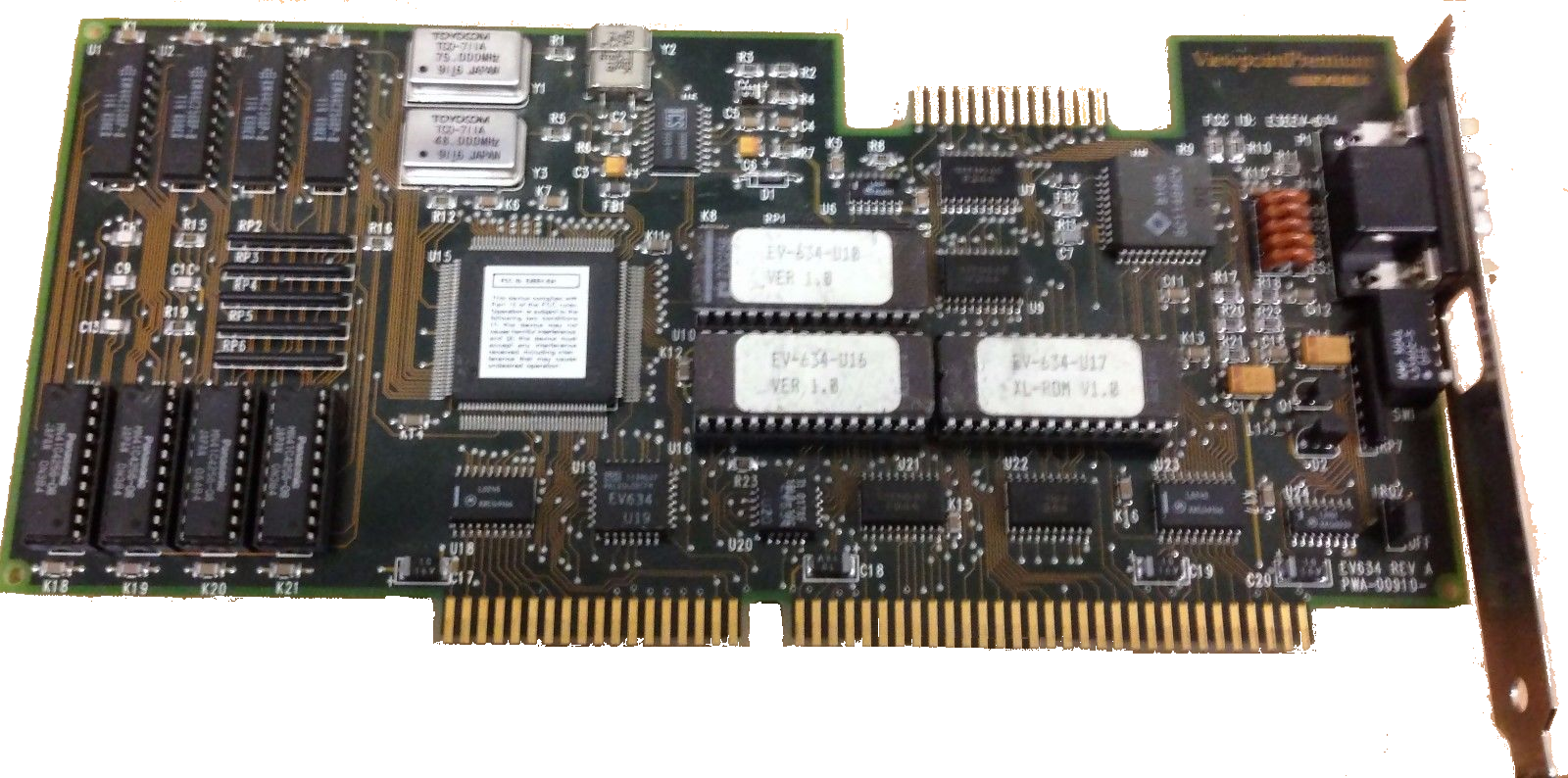 EV-634A Viewpoint Premium VGA Color EV-634A Viewpoint Premium VGA Color
Launched: ?
Bus: ISA 16-bit
Support: VGA
Part #: PWA-00910
Price: ?
|
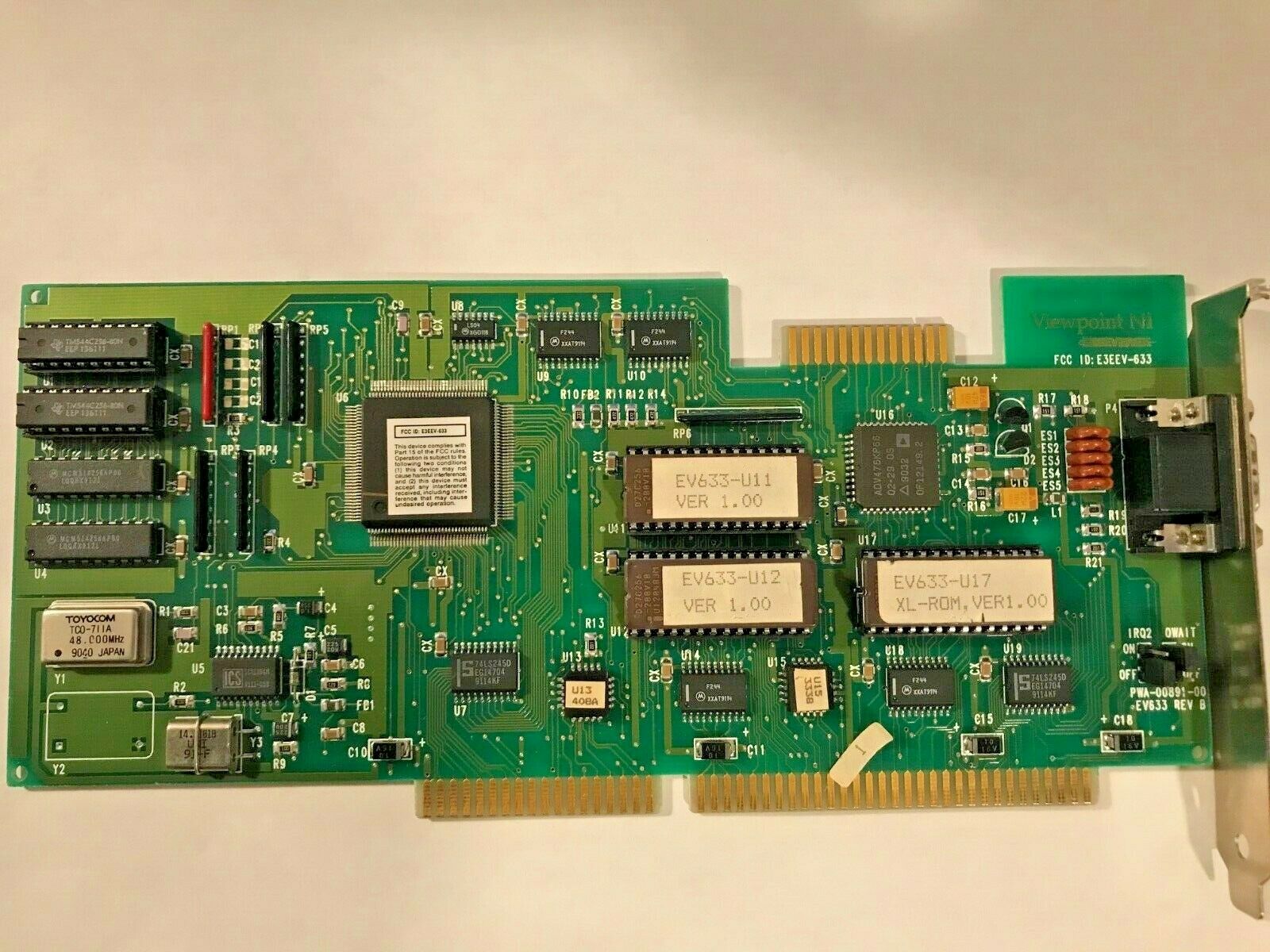 EV-633 Viewpoint EV-633 Viewpoint
Launched: 1991
Bus: ISA 16-bit
Chipset: Tseng Labs ET4000
Memory: 512 KB or 1 MB
Support: MDA, EGA, VGA
Part #: Unknown
Price: $142/$179 (256 KB/512 KB, Apr '91)
FCC ID: E3EEV-633
"Pros: Excellent Windows performance
Cons: Expensive, difficult installation
The Everex Viewpoint VRAM is harder to install and configure than most boards. Combine this with a $392 street price — the highest in the roundup — and you'll wonder whether the board's fast PowerPoint and Excel performance make the Viewpoint an appealing purchase.
One way of curbing the board's high price is to buy it configured with ordinary RAM instead of video RAM (VRAM); this can save you either $100 (for 512K) or $200 (for 1MB). The trade
off is a slight decrease in speed.
Installation can be difficult for two reasons: You have to install software drivers without a menu, and you may need to set both DIP switches and jumpers. Even when you follow the manual's instructions, you may need to make additional changes. During testing we had to reconfigure a hard disk controller card before the system would boot. Fortunately, the company's toll-free technical support proved extremely helpful.
It's unfortunate, though, that calling Everex's 800 number may be necessary. High price and potentially tricky installation make the Viewpoint less appealing than many"
PC World, August 1991
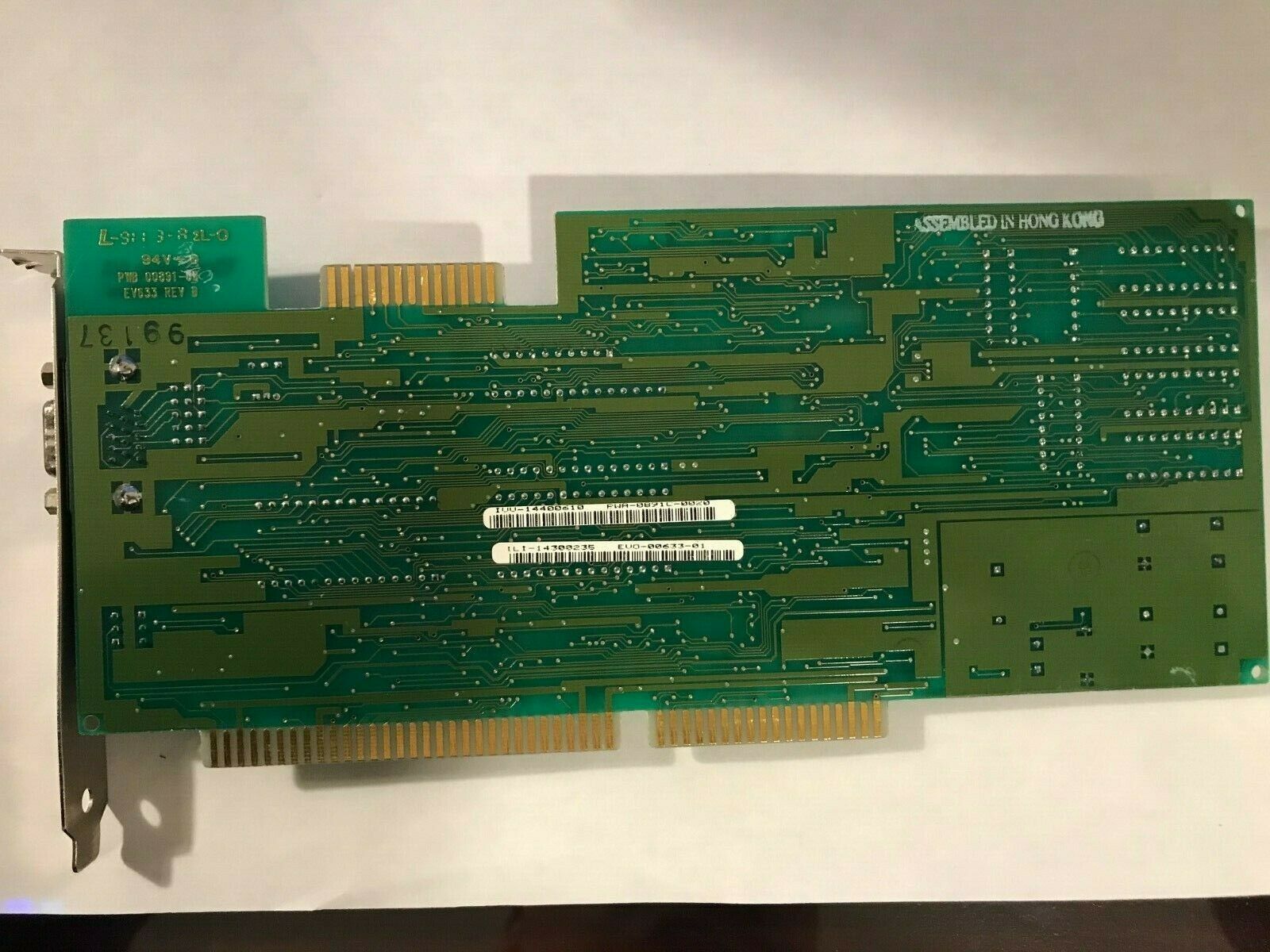
|
 EV-673 EVGA EV-673 EVGA
Launched: 1987
Bus: ISA 8-bit
Support: MDA, CGA, EGA, VGA, SVGA
Part #:
Price:
The EVGA was designed to provide full VGA capabilities to an IBM PC, XT, AT and compatibles, given that it was an 8-bit ISA card. It provided the standard VGA's 256 colours at 640 x 480 (out of a palette of 256,000) and supported all 17 VGA modes in hardware.
In addition, EVGA also supported:
- 512 x 480 in 256 colours for video capture
- 1280 x 600
- 800 x 600
- 132-column text mode
- PS/2, Multi-frequency, EGA, CGA and monochrome monitors
Advert
|
 EV-678 Viewpoint EV-678 Viewpoint
Launched: Late 1989
Bus: ISA 16-bit
Support: MDA, CGA, EGA, VGA, SVGA
Memory: 256 KB or 512 KB
Part #: PWA-00566-0
FCC ID: E3ESUVEV-678
Price: $299 for 256KB or $369 for 512KB (Dec '89)
The Everex Viewpoint arrived in late 1989, offering SVGA resolutions up to 1,024 x 768 in 16 colours. At its core was a Trident 880CS chipset.
Its competition at the time included the Ahead Systems VGA Wizard/Wizard Deluxe, Boca Research Super VGA, Genoa SuperVGA Model 6400, Video Seven VGA 1024i, Renaissance RVGA II, Paradise VGA Plus 16, Paradise VGA Professional, STB Systems VGA-EM16, ATI VGA Wonder, Orchid ProDesigner Plus and AST VGA Plus.
Performance differences between all these boards is negligible - overall the Viewpoint scored close to the top in an InfoWorld review in December 1989 against these cards and more.
  
|
 EV-?? Viewpoint VRAM EV-?? Viewpoint VRAM
Launched: 1991
Bus: ISA 16-bit
Chipset: Tseng Labs ET4000
Memory: 512 KB or 1 MB
Support: SVGA.
Part #: PWA-00910
Price: $699/$499 (1 MB/512 KB, Apr '91), $392 (512 KB, Aug '91)
The Viewpoint VRAM was a three-quarter-slot sized Super VGA card launched in early 1991. Coming in both 512 KB and 1 MB versions, the latter supported resolutions up to 1280x1024 in 16 colours. It also supported 1024x768 in 256 colours flicker-free at 72 Hz. The VRAM was also a decent performer, being beaten only by the STB Powergraph ERGO-VGA.
As a crop of Super VGA cards that appeared in 1991, the Viewpoint VRAM went head-to-head against the Boca Research SuperVGA, Diamond SpeedSTAR VGA, Orchid ProDesigner II, Sigma Designs' VGA Legend, STB Powergraph ERGO-VGA, Trident Impact III, and Video Seven VRAM II.
"The familiar 'more is better' philosophy seemed to hold true in our roundup of Super VGA boards. Our readers wanted to see boards that supported 1,024-by-768 resolution with 256 colors.
Of the high-end boards reviewed, the STB Powergraph ERGO-VGA was the board that offered the most for the money: It was the speediest board of the bunch. The STB board also offers flicker-free display at 1,024-by-768 resolution.
The Everex Viewpoint VRAM came in a close second, and it offers the highest resolution [at 1,280-by-1,024]. Its flicker-free 75-hertz display
contributed to its solid performance. The Viewpoint VRAM's list of supported drivers also included OS/2 Version 1.2.
The STB, the Everex, and
the Diamond [SpeedSTAR VGA] are the only boards in this comparison that offer flicker-free display at 1,024-by-768 resolution. A board must have a vertical scan rate of at least 70-hertz to achieve flicker-free display.
The Everex board features the benefit of 1,280-by-1,024 resolution, however the $699
price may motivate you to take a closer look at the less-expensive boards."
InfoWorld, 15 April 1991
|
 Everex Systems, Inc.
Everex Systems, Inc. EV-156A
EV-156A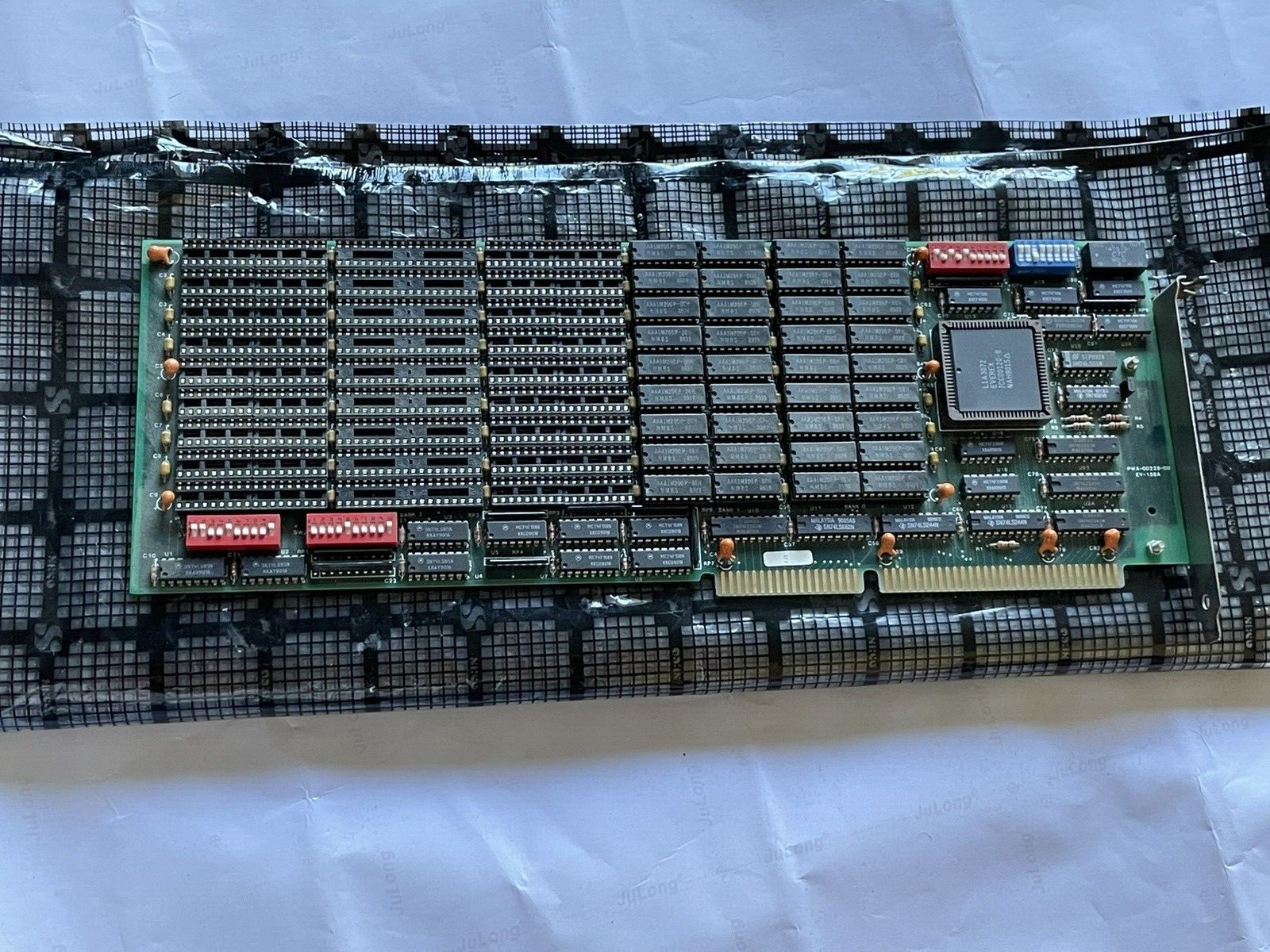
.png)
.png)
.png)
.png)



























